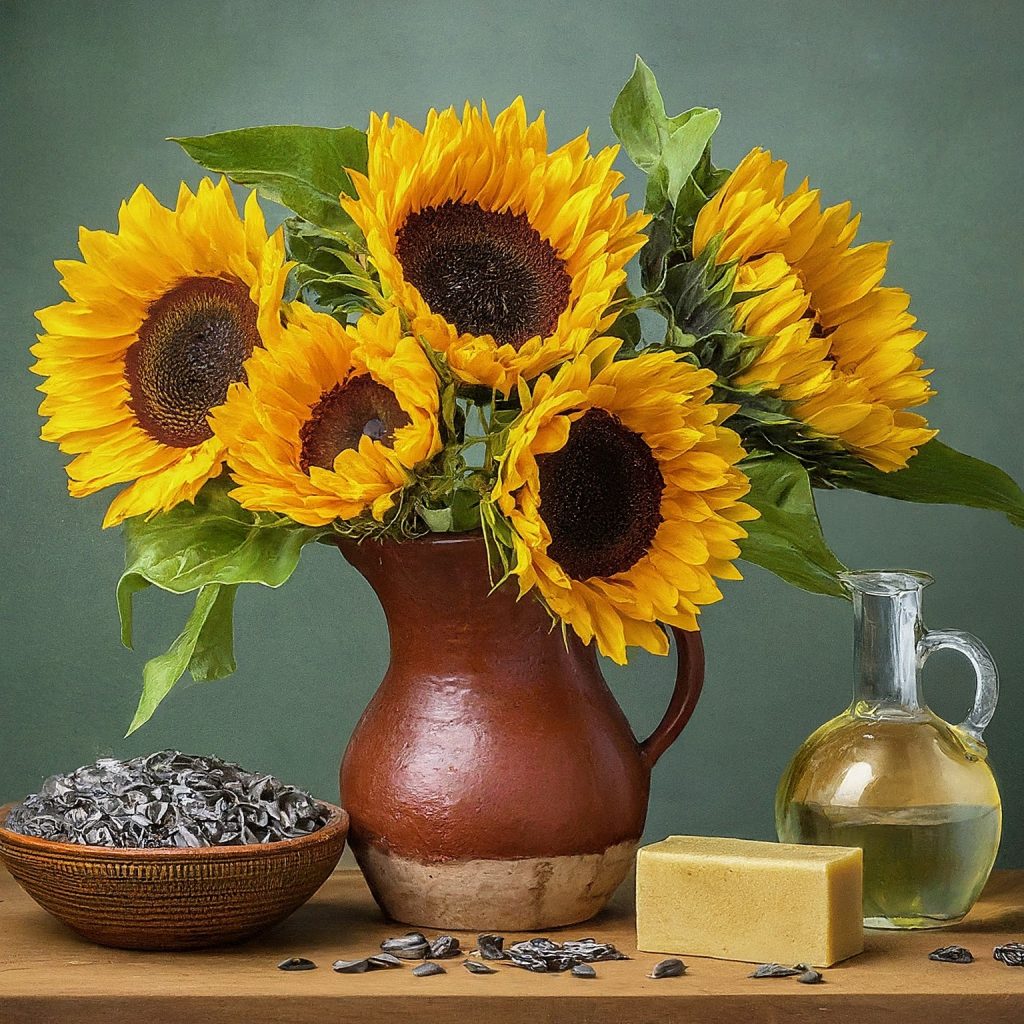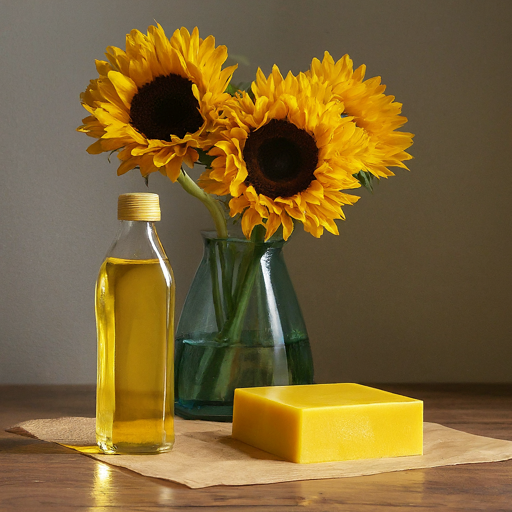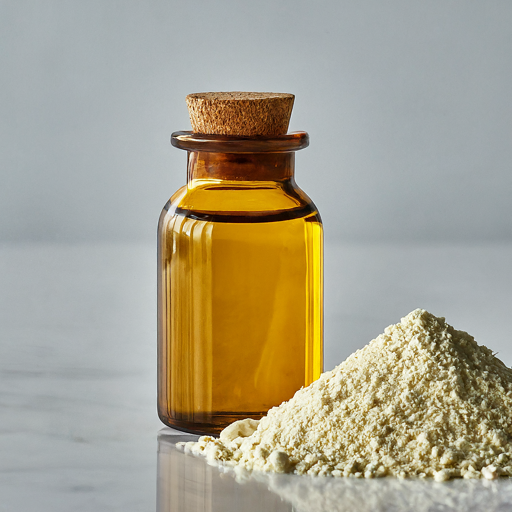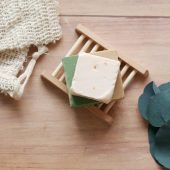It’s hard to say where in the world Sunflowers are best-loved, or in which culture they are most deeply rooted. Between 1-2 million years old, they are native to the Americas but also have a long history of cultivation in other parts of the world. Considered the “fourth sister” by eastern Indigenous Americans, this Asteraceae is so much more than just the “pretty one” in her family. In the west, the Shoshone once depended on stores of sunflower seed as a food reserve, while the Owyhee Paiutes pounded the toasted kernels into a base for juniper pudding. The golden-yellow petals are not only a stunning frame for the valuable seeds but are edible as well. They may have been used by the Hopi in dyes for weaving along with the hulls which can be used to create earthy mauve & lavender tones. The taproots may also be worth digging up, as the Navajo have been known to bake & apply them externally for various ailments.
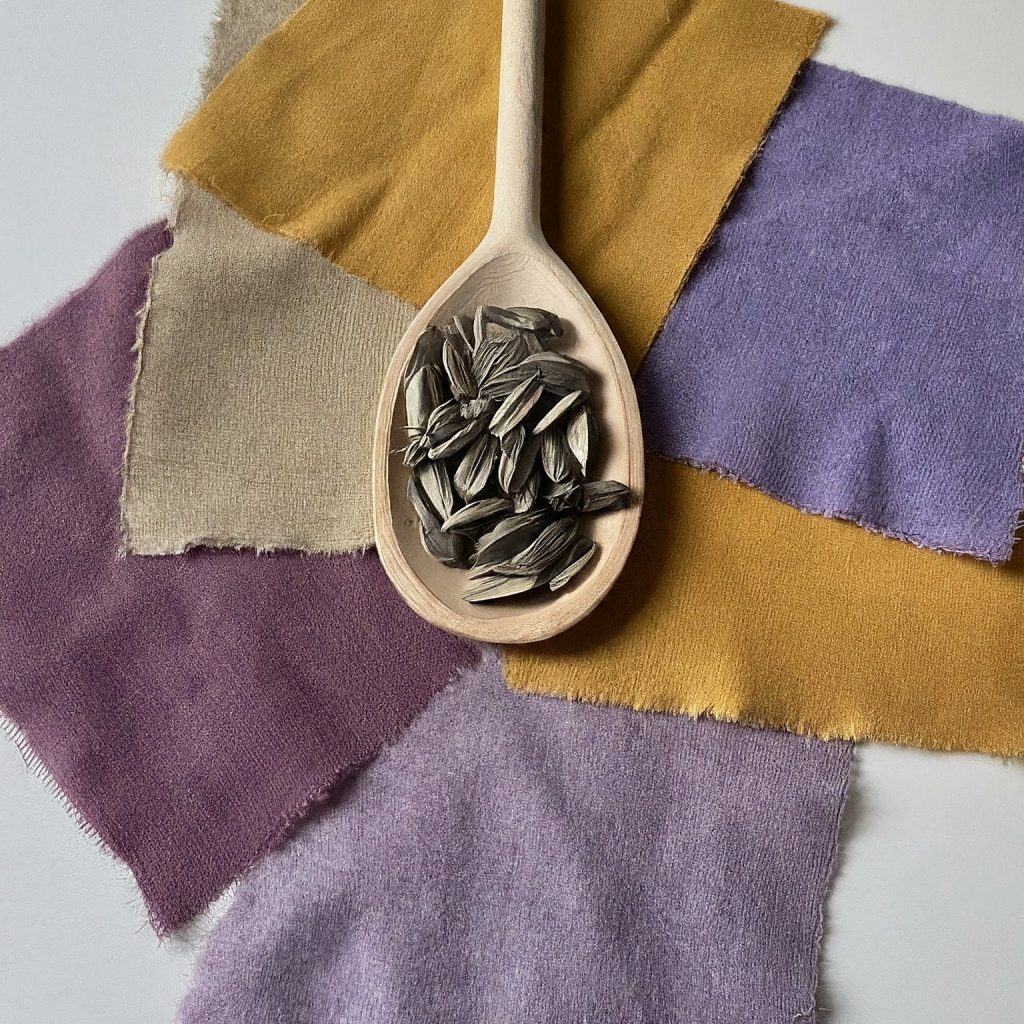
Sunflowers were at one point an important source of light for Russians during the Cold War Soviet Era. Utilized as a source of lamp oil, sunflowers have unsurprisingly been associated with warmth & optimism. In more recent history, the sunflower has come to symbolize peace and resilience for Ukraine, the leader in global production of sunflower products.
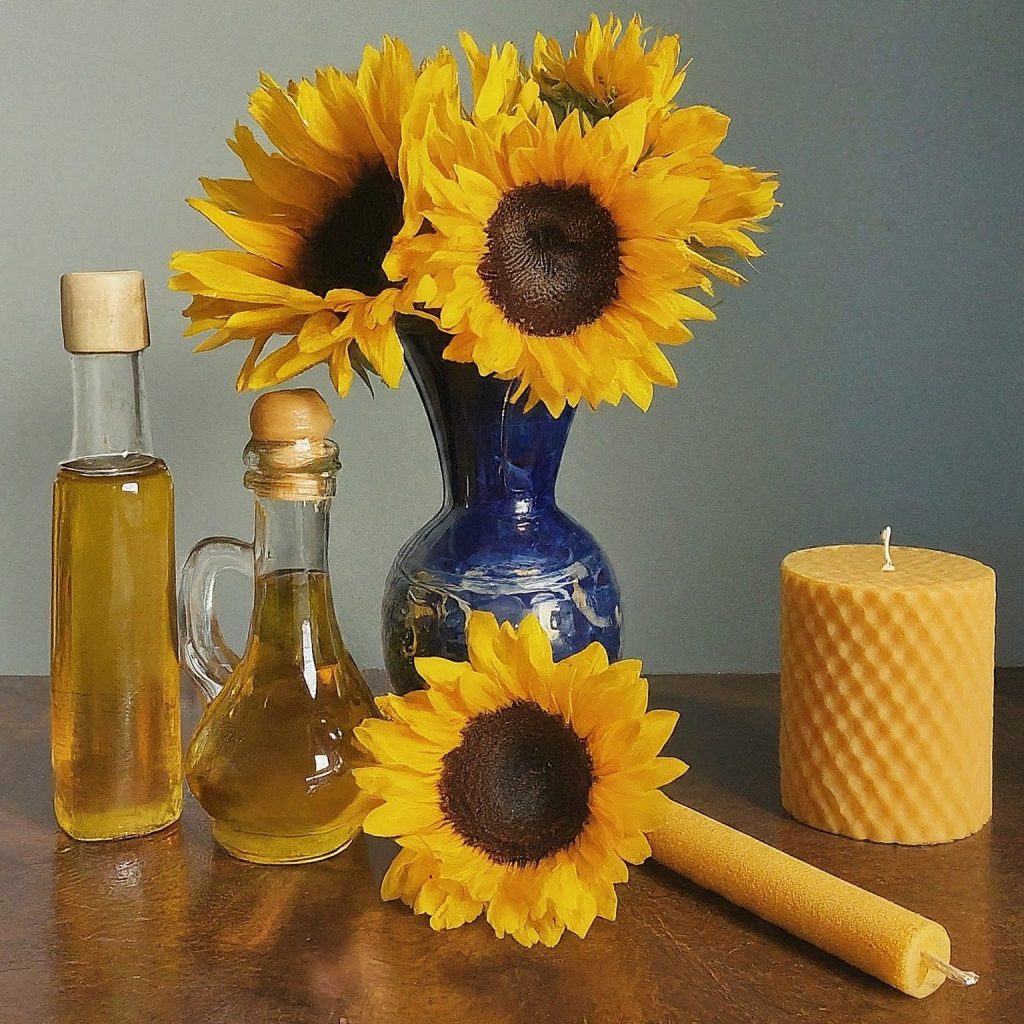
Sunflowers are resilient indeed. They are incredibly adaptive, and in fact their wonderful ability to withstand drought is due to the same gene that results in the recognizable bullseye that allows bees to find them from far away. Yes, perhaps it is the bees who love this flower most heartedly! And for good reason too—it has recently been discovered that sunflower pollen helps to protect hungry honeybees from C. Bombi, a pathogen that can live in their gut. Who knew a bug could have a stomach-bug? Thankfully, most people with seasonal allergies are not affected by sunflower pollen. Food-related allergies to the seeds are likewise rare, especially in comparison to the (approximately) 6.2 million Americans averse to peanuts, 3.9 million allergic to tree nuts, and 1.9 million allergic to soy. For this reason, sunflowers are an ideal source of oil & lecithin extract.
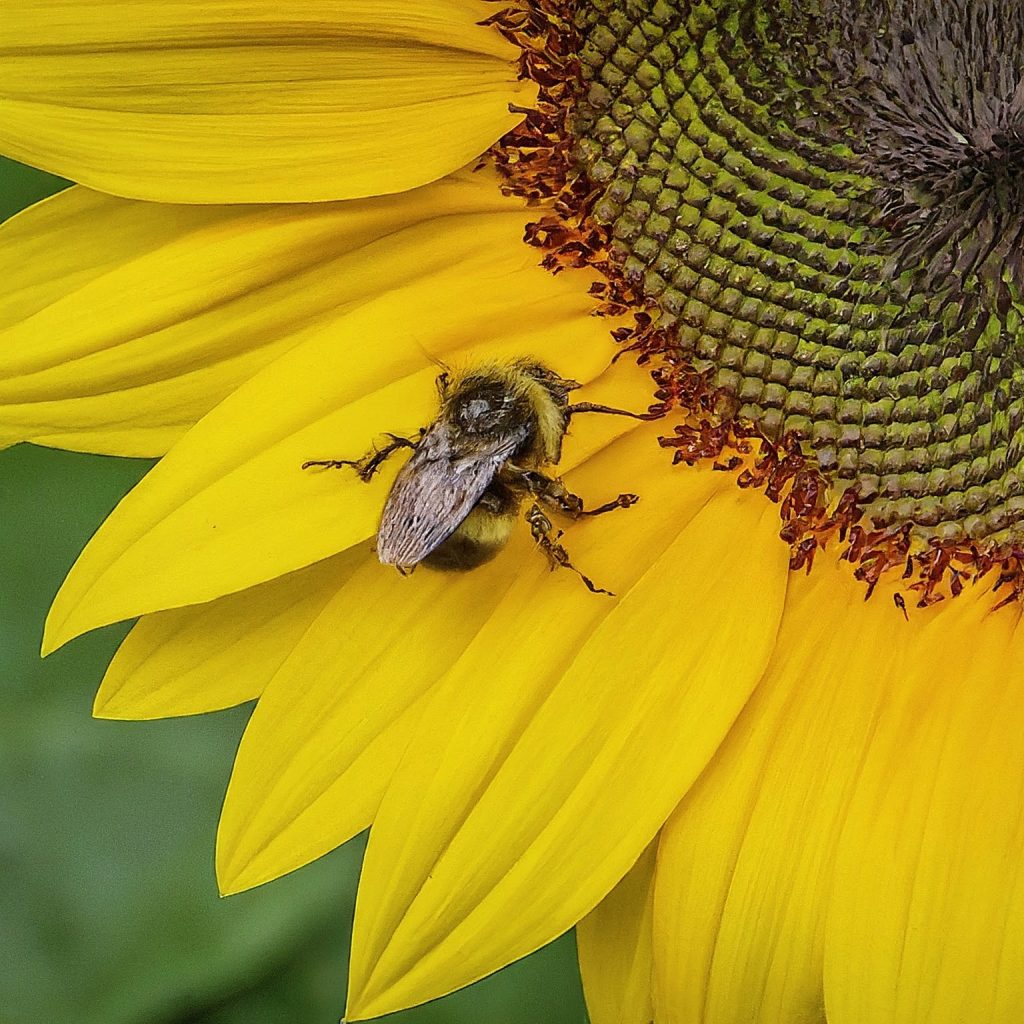
Much like the flowers themselves, all sunflower products begin with the seeds, which are expeller pressed to yield oil. From the pure oil, we obtain conventional sunflower oil—the starting point for materials such as liquid lecithin that can be further processed into a powder for nutraceuticals and supplements. Sunflower oil is also the base for naturally derived versions of Glycerin and Vitamin E. Jedwards will soon be featuring a Vitamin E solely composed of mixed Tocopherols derived from sunflower oil.
Virgin Sunflower Oil, which has a mildly nutty flavor and subtle sweetness, does not undergo any refining process and retains all its natural characteristics. When sunflower oil is hydrogenated, the result is a vegan-friendly biproduct – Sunflower Wax. Said to be softer and more pliable than beeswax, sunflower wax is used in nearly all the same applications and is a common ingredient in candles, lip balms, skin moisturizers, and cosmetics. It may even be used as a coating on fruits & vegetables to help retain freshness and give a little extra shine!

A favored ingredient in skincare and food manufacturing alike, the popularity of sunflower oil is not only due to its benefits but also attributable to its cost-effectiveness. Varieties of oil extracted from sunflower seeds offered by Jedwards include: High Oleic, High Oleic Organic, High Oleic Virgin, and Organic Certified which many refer to as High Linoleic given its naturally occurring high levels of linoleic fatty acid. But what makes these oils especially great? Let’s discuss!
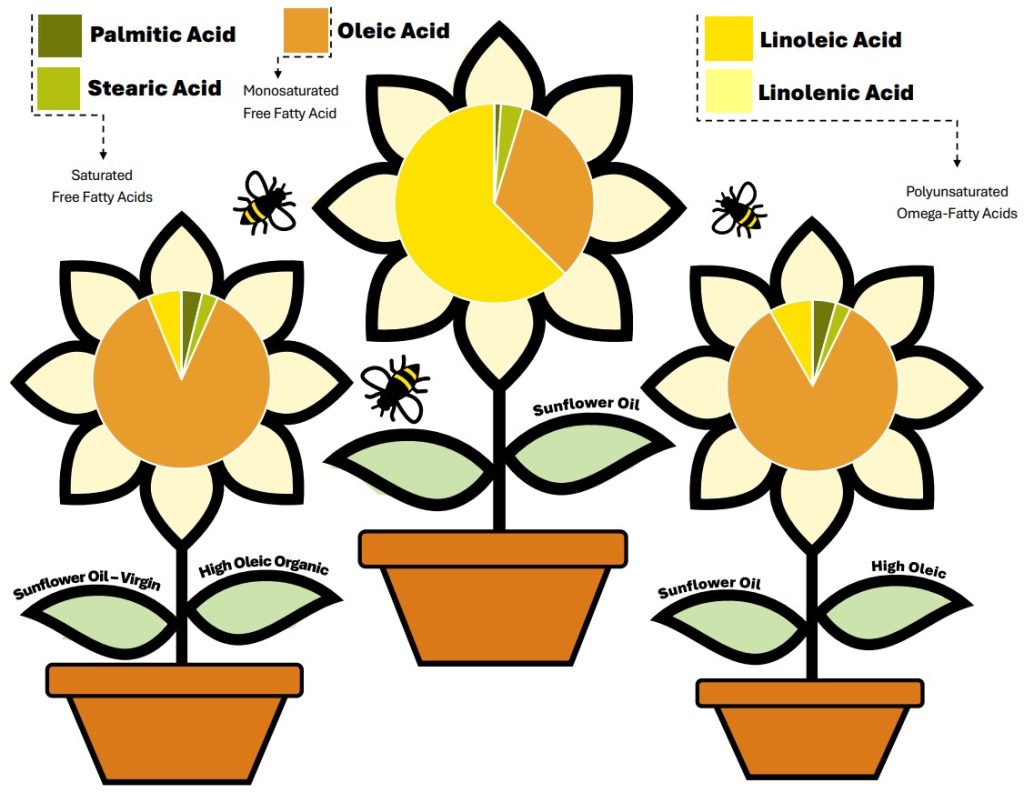

Image: Average Free Fatty Acid Content of Sunflower-Derived Oils Across 83 Lots
Because of its high smoke point and neutral flavor profile and aroma, High Oleic Sunflower oil is a perfect medium for frying. In large-scale food production, it is primarily used for this purpose but may also be included in baked goods & sold in bottles for home cooking. The high oleic variety, (as noted in its name) is naturally high in monosaturated fatty acids which are resistant to oxidation. Non-greasy and high in vitamin E, sunflower oil is preferred in formulations for sensitive skin where soybean and soybean-derivatives would otherwise be present. In topical applications, sunflower oil is an emollient that promotes soft, smooth, and pliable skin through its ability to remain on or within the skin’s outermost layer. It can be absorbed quickly in comparison to other natural oils and is non-comedogenic (unlikely to clog pores), which means it makes the cut in many face serums. Its moderate water vapor permeability (breathability) and low viscosity means it feels very “light” and comfortable on the skin.
High Oleic Sunflower oil is lower in linoleic acid and extremely stable thanks to a high percentage of Oleic Acid. In a study where researchers fried shrimp in high oleic sunflower oil for 24 hours, the amount of oleic acid actually increased! (If this is how they cook their shrimp, I’m scared to see how they order their steak.) The fantastic stability of this material is not only evident in its reaction to heat, but also through its resistance to other oxidative accelerators such as moisture and sunlight. In short, sunflower oil not only benefits skin in lotions and cosmetics but can also extend shelf life if you choose the right variety.
While not as high in monosaturated free fatty acids as the High Oleic version, conventional sunflower oil is highest in Linoleic Acid. More commonly known as an Omega-6 fatty acid, Linoleic Acid is coveted for various health benefits when consumed or used topically in formulations.
Though not quite as popular as sunflower oil, sunflower lecithin comes in third (behind the seed itself) as the most sought-after sunflower product. Best known as an emulsifier, it binds oil and water-based ingredients in foods and cosmetics. You will thus find it in your favorite chocolate bar and perhaps in your favorite chocolate-colored lipstick! Like the oil it comes from, sunflower lecithin is an extremely stable preservative and will help maintain freshness over time. While the liquid form might be preferable in integrations for products like salad dressings & sauces, the powdered form might be used in instances where low moisture content is important.
Sunflower products have a long history with a promising future ahead. Valued both in traditional and emerging markets, embracing sunflower products not only supports a time-honored tradition but also aligns with a forward-looking approach to sustainability that leaves room for innovation. As global trends are expected to favor natural/vegan materials that are not only good for business, but also for the planet, sunflower derived products are not going out of style anytime soon. It is both valuable and comforting to know we can rely on this remarkable & resilient flower to stick around.
